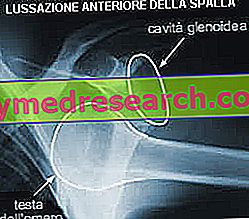
What is Dafiro?
Dafiro is a medicine containing two active substances, amlodipine and valsartan. The medicine is available as tablets (dark yellow and round: 5 mg amlodipine and 80 mg valsartan; dark yellow and oval: 5 mg amlodipine and 160 mg valsartan; light yellow and oval: 10 mg amlodipine and 160 mg valsartan).
What is Dafiro used for?
Dafiro is used in patients with essential hypertension (high blood pressure) that is not adequately controlled with amlodipine or valsartan given alone. The term "essential" indicates that hypertension has no obvious cause. Dafiro is not recommended in patients below 18 years of age because there is no information on safety and efficacy for this age group.
The medicine can only be obtained with a prescription.
How is Dafiro used?
Dafiro should be taken by mouth with one tablet once a day with a little water, with or without food. The dose of Dafiro to use depends on the doses of amlodipine or valsartan that the patient previously took. It is possible that the patient should take separate tablets or capsules before switching to the combined tablet. Dafiro should be used with caution in patients with liver problems or biliary obstruction disorders (problems with the elimination of bile).
How does Dafiro work?
Dafiro contains two active substances, amlodipine and valsartan. These are two antihypertensives available separately in the European Union (EU) since the mid-1990s, which act similarly in reducing blood pressure, or producing a relaxation of blood vessels. With reduced blood pressure, the risks associated with high blood pressure, such as having a stroke, decrease.
Amlodipine is a calcium channel blocker, meaning that it blocks particular channels on the cell surface, called calcium channels, which normally allow calcium ions to enter cells. When calcium ions penetrate the cells of the musculature of the vascular walls, they cause a contraction. By reducing the flow of calcium in the cells, amlodipine inhibits the contraction of the cells, favoring the relaxation of the vessels.
Valsartan is an angiotensin II receptor antagonist, meaning that it blocks the action of a hormone in the body called angiotensin II, Angiotensin II is a powerful vasoconstrictor (a substance that narrows blood vessels). By blocking the receptors to which angiotensin II normally attaches, valsartan blocks the effect of the hormone, allowing the blood vessels to dilate.
How has Dafiro been studied?
Since amlodipine and valsartan have been used for many years, the company presented data on the two substances from previous studies and scientific literature, as well as new studies on the use of the two substances in combination.
Five main studies were conducted on a total of about 5 200 patients, mostly with mild to moderate hypertension. Two of these (for a total of almost 3 200 patients) compared the efficacy of amlodipine, valsartan or the combination of the two with that of a placebo (a dummy treatment). Two other studies (1 891 patients) compared the effects of this combination in patients in whom hypertension was not adequately controlled with 10 mg of amlodipine or 160 mg of valsartan. The fifth, smaller study compared the efficacy of the combination with lisinopril and hydrochlorothiazide (another combination used to treat hypertension) in 130 patients with severe hypertension. In all the studies the main measure of effectiveness was the reduction of diastolic blood pressure (blood pressure measured between two heartbeats). Blood pressure was measured in "millimeters of mercury" (mmHg).
The company also presented data showing that blood levels of amlodipine and valsartan were equal in patients treated with Dafiro and in patients treated with the two drugs separately.
What benefit has Dafiro shown during the studies?
The combination of amlodipine and valsartan was more effective in reducing blood pressure than placebo and valsartan or amlodipine taken alone. Studies that compared the efficacy of the combination in patients already taking amlodipine or valsartan alone showed that, in patients taking valsartan alone, the pressure dropped by 6.6 mmHg after eight weeks, whereas in patients in which valsartan was associated with 5 or 10 mg of amlodipine, the reduction was respectively 9.6 and 11.4 mmHg. In patients treated with amlodipine alone, the reduction was 10.0 mmHg, while in patients in whom amlodipine was associated with 160 mg of valsartan, the reduction was 11.8 mmHg.
What is the risk associated with Dafiro?
The most frequent side effects associated with taking Dafiro (seen in 1-10 patients in 100 treated) are headache, nasopharyngitis (inflammation of the nose and throat), influenza, various types of edema (swelling), fatigue (fatigue), redness, asthenia (weakness) and hot flushes. For the full list of all side effects reported with Dafiro, see the Package Leaflet.
Dafiro should not be used in patients who may be hypersensitive (allergic) to amlodipine or other medicines of the 'dihydropyridine derivatives' class, valsartan or any of the other ingredients. It must not be used in women who have been pregnant for more than three months. Not recommended for use during the first three months of pregnancy. Dafiro should not be used in patients with severe liver, kidney or bile problems, or in patients undergoing dialysis (a blood clearance technique).
Why has Dafiro been approved?
The Committee for Medicinal Products for Human Use (CHMP) decided that Dafiro's benefits are greater than its risks for the treatment of essential hypertension in patients whose blood pressure is not adequately controlled with amlodipine-based monotherapy or valsartan. The committee recommended issuing the marketing authorization for Dafiro.
More information on Dafiro:
On 16 January 2007, the European Commission granted an EU-wide marketing authorization to Novartis Europharm Limited for Dafiro.
For the full EPAR for Dafiro, click here.
Last update of this summary: 03-2009.



